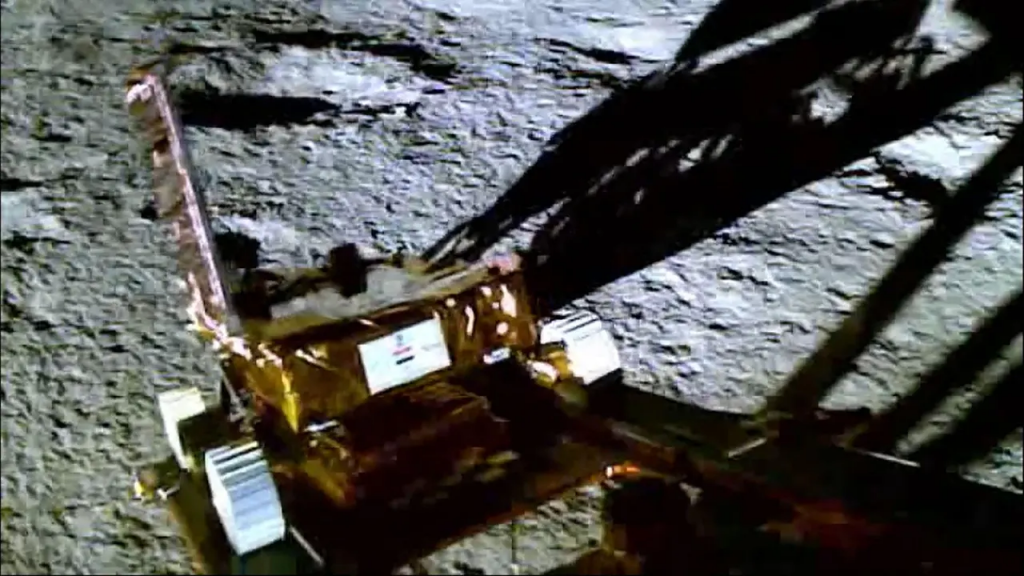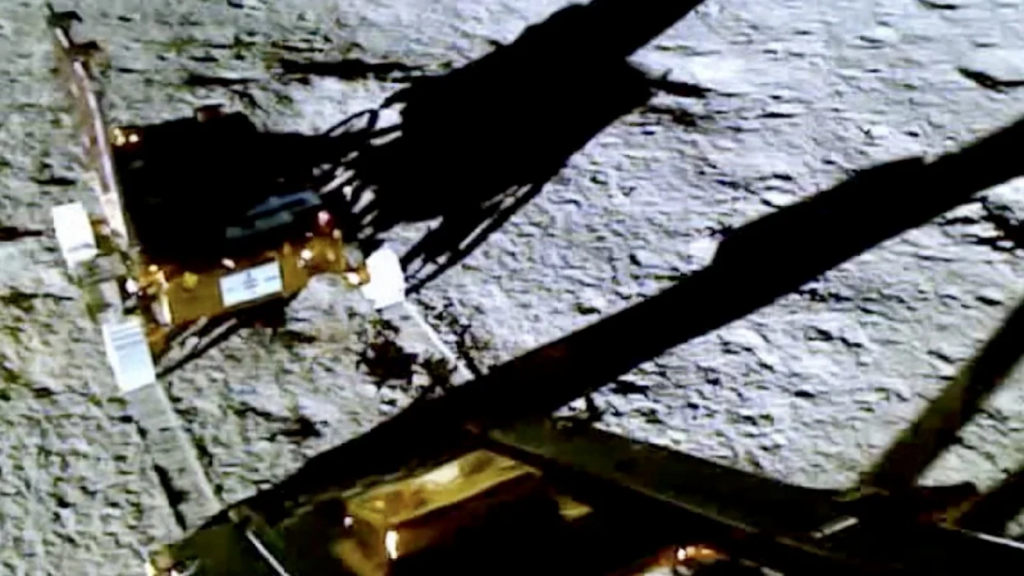Earlier this week, a monumental achievement in space exploration unfolded as India’s Indian Space Research Organization (ISRO) successfully landed its Vikram lander near the Moon’s south pole. This historic feat makes India the fourth country ever to accomplish such a landing and the first to touch down in this intriguing region. The momentous event is now immortalized in a captivating pair of videos released by ISRO, showcasing the rover’s journey to the lunar surface.
In the footage, Vikram can be seen gently releasing Pragyaan, a six-wheeled rover weighing 57 pounds, onto the Moon’s terrain. The rover’s name, derived from Sanskrit, means “wisdom,” reflecting its mission to explore the area for traces of water ice. The second video presents Vikram already traversing the surface, maneuvering skillfully across crater-strewn landscapes.
This achievement marks a pivotal juncture in international space exploration. Softly landing a spacecraft on the uneven lunar surface has historically been an immense challenge, fraught with failures. India’s successful landing contrasts starkly with Russia’s recent setback, where its Luna-25 spacecraft crashed into the Moon due to an “emergency situation.” This accomplishment speaks volumes about India’s technological prowess and commitment to space exploration.

India’s endeavor could potentially settle a long-standing scientific hypothesis – the presence of significant water reserves in the Moon’s polar regions, particularly within the shadows of its extensive craters. As the videos document Vikram’s progress, the scientific community eagerly awaits insights into these uncharted regions.
This achievement signals the dawn of a new era in the ongoing space race. With the US and China already advancing their lunar exploration initiatives, India’s triumph cements its role in future lunar endeavors. The successful landing reshapes the global landscape of lunar exploration, underscoring India’s prowess as a key player.

Anticipating the momentum generated by India’s achievement, Japan’s space agency, JAXA, is set to launch its Smart Lander for Investigating Moon (SLIM), a mission aimed at lunar landing, tomorrow. As more nations venture into lunar exploration, collaborative efforts and the pooling of knowledge become increasingly vital for humanity’s sustained presence beyond Earth.
In essence, the video of India’s rover landing on the Moon’s surface represents more than just a technological advance; it also represents a step toward solving the Moon’s riddles and creating a sustained and cooperative human presence outside of Earth. It represents humanity’s goal to expand into the cosmos as a whole, encouraging global collaboration and a common understanding of our place in the cosmos.


